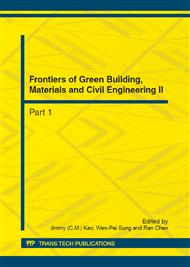p.1086
p.1090
p.1095
p.1099
p.1103
p.1109
p.1113
p.1119
p.1123
Justification of a Fire Model on Predicting Fire in Large Room
Abstract:
Fire models using Computational Fluid Dynamics (CFD) are now popular design or evaluation tools as the computer’s development sharply. By those tools the thermal fire environment can be predicted in a ‘microscopic’ picture with air flow pattern, pressure and temperature contours. However, most of the fire models are only validated by some experiments not specially designed for such purpose, especially for large rooms. In this paper, an existing fire test was used to justify a fire model - FDS4.07 on predicting fires in large room. Smoke layer height and air temperatures inside the room were taken as the parameters. Functional analysis was applied to justify the predictions by the CFD model.
Info:
Periodical:
Pages:
1103-1108
Citation:
Online since:
August 2012
Authors:
Keywords:
Price:
Сopyright:
© 2012 Trans Tech Publications Ltd. All Rights Reserved
Share:
Citation:


